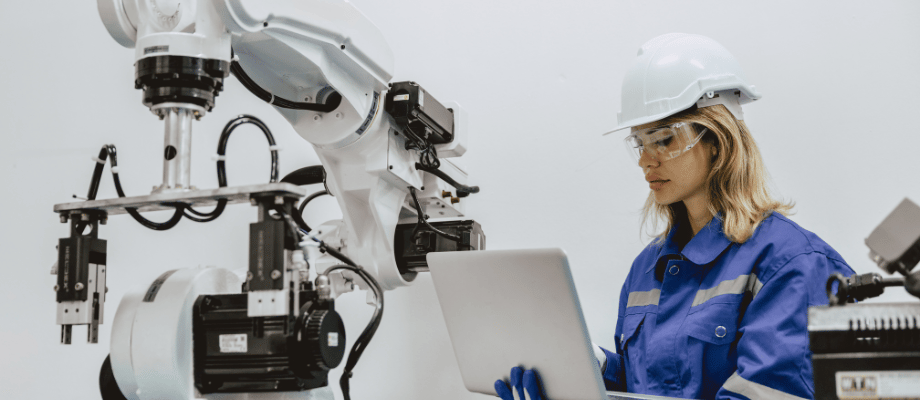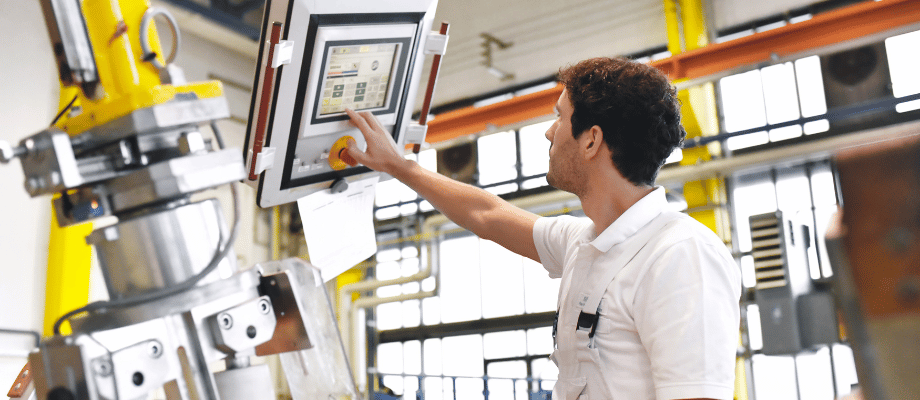Automation engineer


The engineer in automatism shapes the future of industrial processes Through the designing And the programming of automated systems. As technologies evolve rapidly, this professional integrates innovations that transform production chains and optimize equipment performance. This article explores in detail the responsibilities, skills required, and future opportunities of this exciting profession.
I - Job description
Main missions
Design and development of automated systems
The engineer in Automation also called automation engineer is responsible for designing and the development of automated systems. This includesfunctional analysis of customer needs and the creation of technical solutions adapted. The use of tools of CAO (Computer-aided design) and the modelling computer-aided are common for devising Of complex systems.
Programming automatons and robots
The engineer must Program Of programmable automatons (PLC) and robots. It uses languages specific programming such as Ladder and Structured Text to develop automations. La PLC programming is essential for automate industrial processes.
System integration in industrial environments
Once designed, the automated systems should be integrated into the industrial environments. This involves working with techs and teams of industrial maintenance to ensure a commissioning effective. THEmainstreaming Of automated systems requires the use of industrial networks And of communications ethernet or Modbus for the interconnection of equipment.
Maintenance and optimization of existing systems
It ensures the system maintenance existing, which includes the troubleshooting, the preventive maintenance and continuous optimization to guarantee the performance of automated equipment. THEfunctional analysis And thetechnical assistance allow it to identify and solve problems on a system.
Examples of applications
Automation of production lines
One of the main areas of application isautomation Of production lines. This includesassembling, the wiring, and the supervision Of automated systems to improve the efficiency and quality of products.
Control systems for transport equipment
In the sector Railway and aeronautical, engineers in automatism are working on the control systems for transport equipment, thus ensuring the safety and reliability of operations.
Applications in the pharmaceutical and food industry
Les automated systems are also used in industry pharmacological and alimentary to automate production processes, of control-command And of traceability products, thus guaranteeing constant quality and compliance with regulatory standards.
The engineer in automatism plays an indispensable role in designing, the programming, themainstreaming, and the maintenance Of automated systems in various industrial sectors, contributing to the improvement of the efficiency, quality and safety of production processes.
II - What are the qualities and skills required?
Technical skills
Knowledge of programmable logic controllers (PLCs)
The engineer in automatism must have a solid mastery of programmable automatons And control systems. He needs to understand how Program these automatons and use softwares of designing such as TIA Portal or Grafcet.
Mastery of programming languages
The mastery of languages programming specific to automatons is a must. That includes Ladder, Structured Text, as well as others languages used for develop automations complexes.
Understanding of control and regulation systems
A good understanding of control systems and regulation, including concepts such as numerical control, is necessary. This allows the engineer to devising Of automated systems efficient and reliable.
Analytical skills
Analysis of customer needs and industrial processes
To exercise this profession, you must be able to conduct a functional analysis customer needs and industrial processes. This includes understanding the technical specifications and devising solutions that meet specific requirements.
Diagnostics and problem solving
La problem solving is an integral part of his job. He must be able to diagnose and solve complex technical problems, whether during commissioning New automated systems or during the maintenance of existing systems.
Soft Skills
Have good communication
In this profession where we are required to collaborate with various actors, a communication clear and effective is needed. The engineer must also be able to Documenting the technical solutions he is working on and explain them in an understandable way to an uninformed audience.
Project management and coordination with other departments
The engineer in automatism often takes on the role of project manager, coordinating the efforts of the various teams and ensuring that projects are completed on time and on budget. La project management also involves the planning, organization and supervision of the various phases of the latter..
In short, to succeed as an engineer in automatism, it is essential to combine technical skills sharp, a solid capacity forparses And of problem solving, as well as interpersonal skills.

III - Training, career and salary
Training required
To become automation engineer, it is generally necessary to follow a scientific training and solid technique. One engineering degree in automatism, electronics, or industrial computing is often required. The training can start as soon as Bac level, especially with a BAC-Pro in industrial electricity, followed by a BTS Or of a DUT electrical engineering.
Thereafter, the student will be able to continue in Engineering school. Several paths are available to him, such as schools specialized in automation, electronics or industrial computing, or general courses with a specialization in automation. Engineering schools offer curricula which include practical internships in companies, in order to better understand the challenges in the field.
It is also possible to complete this training with a Master in automation or a specialization in fields such as robotics, artificial intelligence applied to industry, or the management of automated production.
Continuing education and certifications
Throughout their careers, engineers in automatism must keep up to date with new technologies and advances in their field. Of continuing education And certifications in Automation, PLC programming, or project management are often needed to maintain and develop their skills. Programs of dual training Or professionalization contracts can also be taken to deepen certain technical skills.
Typical career path
Engineers in automatism often start their career with an internship or a first job in the field. They can start astrainee or intern in industrial companies, participating in projects of designing And of PLC programming. One first experience in industrial maintenance Or in automation is often valued.
Then, with experience, engineers can evolve into positions of project manager, Business manager, or development engineer. They can also specialize in areas such as industrial robotics, the control systems, or theengineering Of complex automated systems. Some may choose to become consultants in industrial automation or to work in design offices And of research and development.
Salary
The salary of an automation engineer varies according to their level of experience, the size of the company, the sector of activity and its geolocation.
- Beginner : An automation engineer at the beginning of their career can expect a gross annual salary of between 35,000 and 45,000 euros.
- Intermediate (3 to 5 years of experience) : After a few years of experience, remuneration generally changes between 45,000 and 60,000 euros per year.
- Confirmed/Senior (more than 10 years of experience) : An experienced engineer can receive a salary ranging from 60,000 to 80,000 euros, or even more depending on his responsibilities and his level of expertise.
Depending on the sector (automotive, aeronautics, pharmaceutical, etc.) and specific skills (robotics, industrial cybersecurity, complex project management), some remuneration may be higher, especially for engineers occupying positions of responsibility or working internationally.
In conclusion, to become automation engineer involves a rigorous educational background and dynamic professional development. Of diplomas appropriate, combined with professional experiences rewarding and continuous learning, allow you to build a solid and versatile career in the field ofindustrial automation.
IV - Work Environment
Intervention environments
Factories and production sites
The engineer in automatism frequently works in factories And production sites, where he oversees the installation and the commissioning ofthe automated system. These environments include production lines, of machine tools, and automated equipment that require programmable automatons to function effectively.
Research and development laboratories
It is also possible to intervene in research and development laboratories, where he contributes to the designing And at development new technologies and automated systems. Here, he is working on the modelling, the programming, and the functional analyses to develop technical solutions innovative.
Design offices
In the design offices, the engineer in automatism Take part in the system design and to the realization of the specifications for industrial projects. He can also work on mechanical design projects, electrical, and electronics, using tools from CAO And of supervision.
Working conditions
Multidisciplinary team work
The engineer in automatism often collaborates with multidisciplinary teams, including techs, of computer scientists, of electricians, and others engineers specialized in electronics or mechatronic. This collaboration is essential to ensure the harmonious integration of automated systems.
Possible trips to customer sites
The job may involve frequent trips to customer sites for commissioning, the maintenance, and thetechnical assistance Of automated systems. This makes it possible to meet the specific needs of customers and to ensure on-site support for the equipment.
Variable schedules according to projects and maintenance needs
Work schedules can be flexible and variable, depending on the requirements of projects and operations of preventive maintenance or corrective. In a period of commissioning Or of troubleshooting, the engineer may be required to work outside of normal office hours to ensure the proper functioning of industrial equipment.
In summary, the work environment of an engineer in automatism is dynamic and varied, involving interventions in different types of industrial environments and requiring close collaboration with various technical teams. Working conditions are often flexible, adapting to the needs of projects and operations of industrial maintenance.

V - Challenges and Future Prospects
Current challenges
Adapting to new technologies and rapid changes in the sector
The engineer in automatism must constantly adapt to new technologies and to the rapid changes in the sector. The appearance of embedded systems, of theInternet of things (IoT) andartificial intelligence (AI) represents significant challenges, requiring continuous technological monitoring and regular training.
Complex project and system integration management
La project management complexes is another major challenge. The projects ofautomation often involve numerous subsets and human-machine interfaces which must be fully integrated. Coordination between the various teams (electronics, mechanics, IT) and the management of deadlines and costs are crucial aspects.
Future perspectives
Emergence of new technologies such as artificial intelligence and IoT
Emerging technologies, such asartificial intelligence And theInternet of things (IoT), offer significant opportunities. THEautomation intelligent and the automated communicating systems allow a production management more efficient and an optimization of industrial processes. The integration of these technologies opens up new possibilities to improve the productivity and flexibility of systems.
Opportunities in emerging sectors (industry 4.0, smart grids, etc.)
THEIndustry 4.0 And the Smart Grids represent rapidly expanding fields where the skills in automatism are in high demand. These sectors highlight intelligent systems, of industrial networks advanced and a cybersecurity reinforced. Engineers in automatism can find numerous opportunities for professional development And of specialization.
In conclusion, the engineering profession in automatism presents exciting challenges related to rapidly changing technologies and increasing system complexity. However, these challenges are accompanied by numerous prospects for the future, thanks to theemergence new technologies and the expansion of innovative sectors such asIndustry 4.0 And the Smart Grids. Engineers in automatism who are involved in a continuing education and who remain at the forefront of technology will find plenty of opportunities to grow and excel in their careers.
Conclusion
In summary, the engineering profession in automatism is at the crossroads between technological innovation and the optimization of industrial processes. Current challenges, such as adapting to new technologies and managing complex projects, are balanced by promising prospects in emerging sectors such asIndustry 4.0 And the Smart Grids. For those who are passionate about designing And the programming automated systems, this job offers rewarding and varied opportunities.
To find out more about this fascinating field, feel free to check out our Blog where we regularly share articles and news aboutautomatism and associated careers. If you are interested in professional opportunities in automatism, explore our job offers to find the next step in your career.
Spontaneous application
Are there currently no offers that match your profile? Share your spontaneous application with us!




